The world is incredible. You should see it.
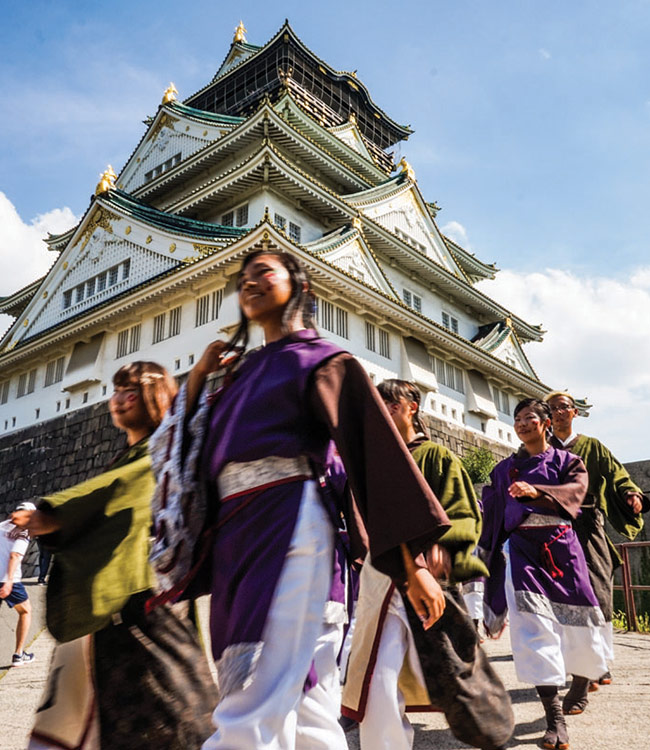
I
n early 2016, I quit a solid six-figure job on Bay Street and sold all my stuff with the ephemeral goal of sailing around the world. I was 36 years old. I didn’t own a boat, didn’t plan on buying one and didn’t know anyone going to sea. I was going to sea-hitchhike and earn my way on strangers’ yachts. Notably, I’d never spent a night on a boat before and had never been to sea. For five years I’d sailed out of Queen City Yacht Club on the Toronto Islands, but my adventures were limited to day cruises and our regular Wednesday evening races on Lake Ontario. I wasn’t even sure whether or not I’d suffer from seasickness. Scary, and a bit crazy, eh?
I left Toronto in January 2016 and came home “for good” in August 2018. By then I’d spent more than 11 of 32 months on sailboats. It took us 27 days of uninterrupted sailing – not a speck of land in sight – to get from Costa Rica to French Polynesia. I scrambled out of the water just in time as a four-metre hammerhead shark cruised by me while swimming near Oa Pou. I later spent four months hopping from anchorage to anchorage on islands from the Bahamas to Puerto Rico. We caught so much lobster on that trip I actually got sick of it.
Back in the Pacific, I helped bring a big, beautiful sailboat from Yokohama, Japan to Hong Kong on a two-week trip that involved some of the scariest sailing of my life – I learned that it's important to never be complacent. Finally, in 2018, I headed north for a change of scenery and sailed the Baltic Sea. I won't say “mission accomplished”, because I don’t think I’ll ever be done travelling – rather, I’d like to think this was all a good start to earning a broader, better, perspective on life.
While I am admittedly a spontaneous guy, I did do a significant amount of preparation for my trip. I paid off every last scrap of debt and made sure any recurring bills were cancelled or tied to credit cards that I would keep track of, and I signed up for a credit card with no foreign transaction fees. I didn’t own a home, but I met many travellers who did; rather than sell it, they hired a professional rental agency to take care of every detail while they were gone, and let someone else pay down their mortgage.
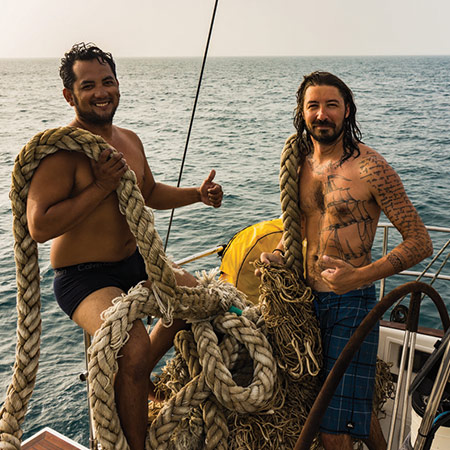
To find a sailboat, I bounced around on various websites and forums that acted as meeting places for captains and crew, and eventually connected with a boat going my way (west). With the banalities of daily life sorted out, I packed a 50-litre backpack and a 20-litre dry-bag. I had one goal: to slow-travel (by sailboat or train) the distance around the world at the equator, about 40,000 kilometres.
I spent three months on my first boat, sailing up the Panamanian coast, across the Pacific, and down through Polynesia to Tahiti. At sea, on a moonless night, the Milky Way is so bright you can read a book by it. From Tahiti I flew to Tokyo to crew for a sailboat race, and later, by chance, met a family of Japanese sailors who basically adopted me as their Canadian son. (I’ve been fortunate enough to sail with them numerous times over the past three years.) I took that opportunity in Japan to travel north to south by train, from Sapporo to Fukuoka, passing Mount Fuji just as the sun was igniting its southern slopes in surreal reds and pinks.
My tale continued in this erratic, serendipitous fashion for the next 20 months. Through friends, I was introduced to a young Colombian couple who were looking for help to sail their new boat from Miami into the Caribbean. I spent four months with them, spearfishing in azure waters while ensuring local rum distilleries did steady business. Departing the tropics, I next flew to Edinburgh and began an epic train journey that took me south through the U.K., under the English Channel, across northern Europe to Amsterdam and Berlin, south to Prague, then northeast to Moscow. There, I boarded the famous Trans-Mongolian Railway, crossing Russia and Mongolia into China. That train trip ended three months and 13,000 km later in Shanghai – I had gone from the North Sea to the East China Sea solely by rail, a feat that gave me the barest glimpse into what adventure meant before the invention of the jet engine.
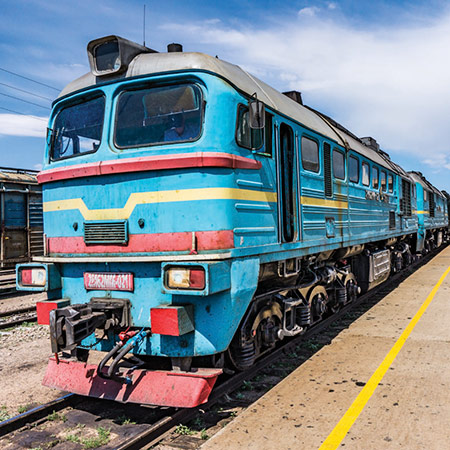
After two weeks in Shanghai (including a brief trip to Macau), I hopped on a ferry and travelled to Osaka to explore the southern half of Japan. I was fortunate enough to get tickets to the Grand Sumo Tournament in Fukuoka, then spent a month living on my Japanese family’s sailboat in the tiny town of Uraga. Midway through that stay, I was asked to help deliver a boat from Tokyo to Hong Kong. Sailing on a 56-foot Swan with a full crew complement of five, it should have been the easiest trip of my life, but it very nearly ended up being my last. We limped into Hong Kong two weeks later, sails literally shredded and nerves not far behind. For the first time in my life I said “no thank you” when someone invited me to go racing the next day.
After a brief hiatus in Canada, my last push for 40,000 km came with an invitation to sail in the Baltic Sea for summer 2018. I flew to Stockholm, then began a leisurely tour south through the Swedish archipelago and into the Baltic. The captain was a history buff like me, and I spent hours listening to him narrate about the region, including on the expansion of the Vikings and rise of the Scandinavian kingdoms. We docked in ancient European port towns in Denmark, Germany, Latvia and Estonia, where I could feel history in the medieval stone piers under my bare feet. Sitting at a street-side café in Tallinn, Estonia, I tallied up my mileage and announced that I had just cracked the 40,000-km mark – 18,000 km by sailboat and 22,000 km by train. The crew cheered, we toasted and everyone celebrated late into the night with pilsners and Vana Tallinn liqueurs.
So how did I go from a cubicle on the 62nd floor to not remembering what it feels like to wear shoes? I want to share my story because it isn't as impossible as it seems when you’re checking the clock at 2:13 p.m. on a Tuesday, for the tenth time in 20 minutes. I often hear that I’m “living the dream” or that I’m the luckiest dude alive. I don’t disagree with either statement, but I do disagree with the unspoken sentiment that what I did is somehow impossible for others. The doors are there, and they’re open – if you're interested in making a change, all you need to know is two things about yourself. The rest is surprisingly easy.
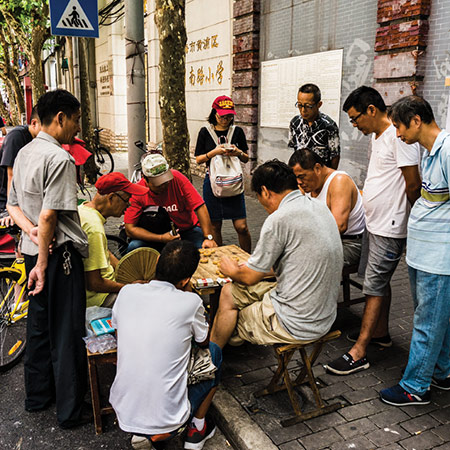
The first thing you need to figure out is what you actually want. People regularly tell me that they’re jealous of what
I did. But if your No. 1 priority is buying that first detached house, or having a child, then you're not actually jealous of the way I’m living my life. You might like the idea of a sunny vacation or an adventure excursion, but the life you want has →
priorities that will keep you at home. There’s absolutely no value judgment between that lifestyle and this one – both have their pros and cons – so you have to be honest with yourself. Would you give up your down payment to fund a year or two off work? Would you be comfortable delaying your family plans for two years? If your answer is no, then go ahead and be jealous of me at 7 a.m. on Monday mornings (when travelling, I habitually forget what day it is), but be happy with yourself because you're on the right path towards your goals.
If the answer is yes, though, then it’s time to consider the second thing you need to know. That is, you can absolutely do this. You can learn some Spanish or Japanese or Arabic. The basics of sailing, as an example, are easy to pick up. If you have some other adventure in mind – climbing or biking or trekking or photography – join a club or meet-up group, make some friends, and get the fundamentals down. International travellers aren’t the mysterious clique of extroverted polyglots that you assume they are. They’re regular people who realized where their priorities lay, and started a to-do list to make those priorities happen.
ou may ask: What about my career? After all, you’ve no doubt worked hard to get where you are in your education and career. You may worry that changing tracks will somehow invalidate all that you’ve accomplished so far. Nothing could be further from the truth. Use your accomplishments as a stepping stone towards your next goal, rather than letting them be an anchor holding you back. Whatever you discover out there – whatever you decide you want to do with your life “later” – the foundation you’ve built so far will always be there. Will another year sitting at that desk really improve your skillset or marketability? The idea of changing track can be frightening, but there's a reason that Stagnation Management 101 isn't an MBA course. Embrace change. Reward requires risk.
As for me, after two-plus years of travel I find myself happily back in Canada. I’m often asked what the biggest revelation of all this has been, and without a doubt, my answer is “how much I love home.” The world is incredible – you should see it – but I’ve discovered that I will always miss Southern Ontario, with my family and friends and the lake and the Jays.
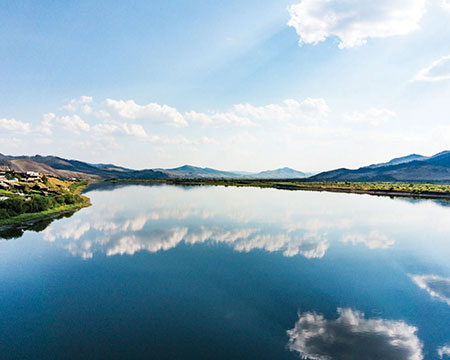
Of course, I don't think I’ll ever be “settled” permanently, so an integral part of the next stage of my life will be flexibility. That’s not an unrealistic goal. When you’re watching your sails disintegrate as you race by the rocky lee-shore of an island, propelled by five-metre waves and 40-knot winds, with a teammate’s blood drying in a splatter-pattern up your chest, you gain a sense of perspective that is totally absent in normal life. I know what I want to do next, and I’ve found the confidence to go out and do it…again.
You should too.
A version of this article was originally published as “Toronto, Tahiti, Tokyo: Risk and Reward” on LinkedIn. To read more by Russ Rowlands about his travels, visit aChartOfDays.com
